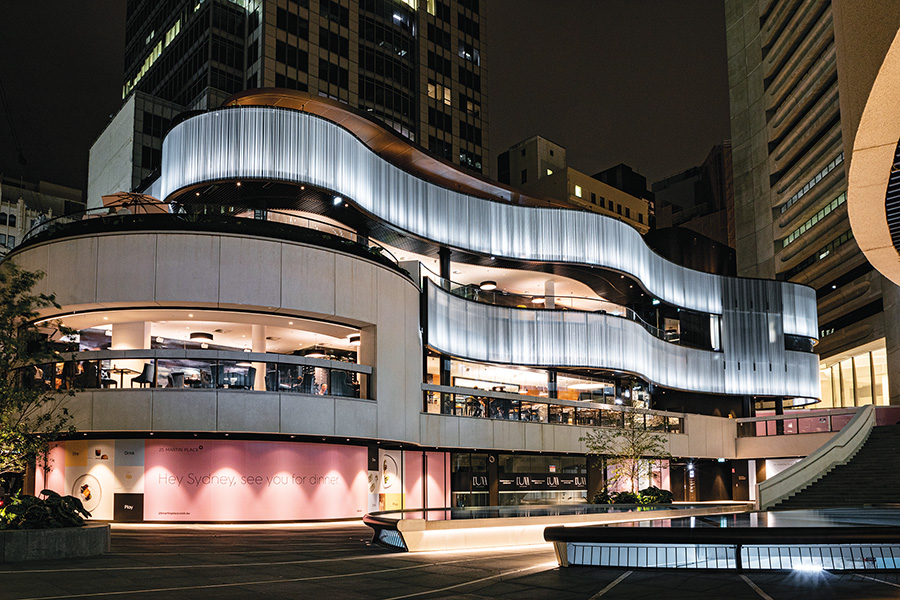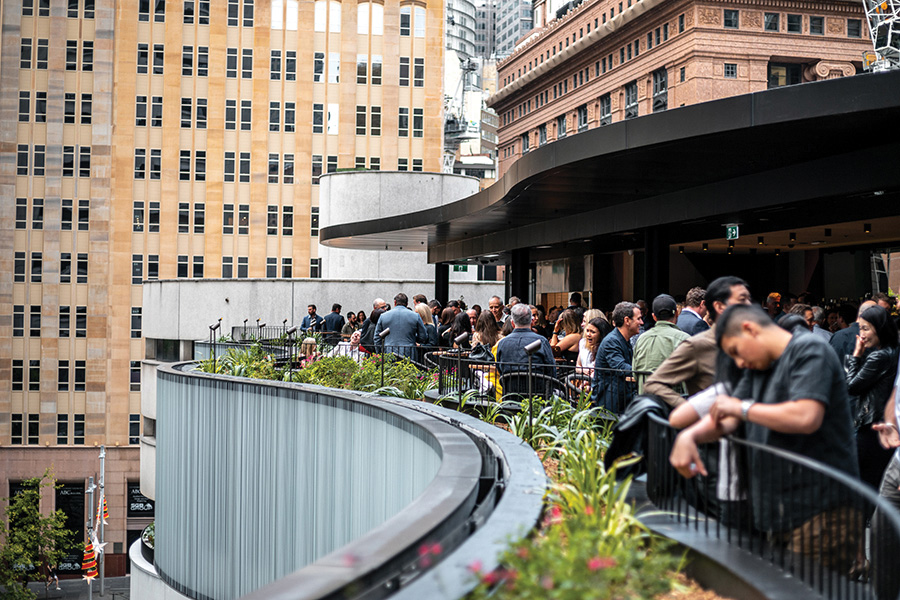Lucy Burnitt Development Manager, City Retail, Dexus – Nominee for the Frank Lowy Fellowship 2020.
The Frank Lowy Fellowship is an industry initiative of the Shopping Centre Council of Australia that is proudly supported by Scentre Group. Now in its sixth year, the fellowship was established in recognition of the contribution made by Sir Frank Lowy AC to the Australian shopping centre industry.
In this special feature (published in SCN‘s CBD Guns edition), we showcase the talent of past fellowship winners and nominees who have demonstrated excellence in their field and celebrate them as next-generation leaders, collaborators and innovative thinkers whom will ensure Australia’s shopping centre industry continues to be a world leader.
Lucy has been responsible for the delivery of a number of major retail projects as well as the asset management on both internal and joint venture retail assets within the Dexus portfolio. Lucy is currently leading the ~$170m retail development of Sydney’s 25 Martin place (formerly MLC centre). She has successfully navigated challenges including; a heritage listing while under construction, a 55-year lease with the NSW State Government to reopen the Theatre Royal; responding to the diverse needs of incoming tenants and challenging design outcomes to improve amenity and accessibility.
What do you love most about the shopping centre industry?
I have always loved that shopping centres are uniquely placed to play a pivotal ‘city-making’ role in their local community. In addition to servicing the everyday need for goods and services, shopping centres also have the ability to function as the heart of their community by offering places to play, relax, learn, socialise and entertain. I have always loved observing the buzz of a busy precinct and watching people gravitate towards that buzz!
How have you adapted to the changing retail landscape?
For some time now, the retail landscape has been in flux as it grapples with the challenges spurred on by advancements in technology, the growing world of online and, more recently, the challenges associated with the pandemic, supply chain impacts and high inflation.

25 Martin Place
These challenges have necessitated the adoption of a ‘city-making’ approach to the redevelopment of 25 Martin Place to ensure that it will provide people with a compelling and enduring reason to return to the city, as the space once again reasserts its role as the heart of Sydney’s retail, dining and cultural scene.
To achieve this, it has required focus on more than just the retail. This process has necessitated a rethink about the importance of the third space, connectivity to the greater city and the need to create sustainable places that offer a wide range of experiences.
The surrounding laneways are in the process of being reactivated with the installation of a 30m artwork, a theatre ‘walk of fame’ and pedestrianisation works.
The public plaza has been reimagined into a vibrant place to meet up with the integration of one of the largest water features in the Sydney CBD, in a contemporary nod to one of Harry Seidler’s early visions for the precinct.
The Theatre Royal has re-emerged and raised its curtain after being dark for many years, supporting the success of the 25 Martin Place retail and dining precinct while driving visitors back into the CBD, in the aftermath of COVID-19.
By delivering a centre fundamentally underpinned by a diverse offering that responds to the physical, social and cultural needs of the city, the retail at 25 Martin Place is built upon a resilient foundation that will allow it the flexibility required to adapt to change over time.

Theatre Royal, 25 Martin Place
How have you applied technology to deliver better outcomes for your business and customers?
During the course of the past few years, I have been excited to look at innovative solutions to a number of complex issues on the 25 Martin Place project with the end goal of ultimately creating a better experience for the shoppers, diners, workers, visitors, theatre patrons, architecture enthusiasts and art connoisseurs of the precinct; the combination of which represents the diverse future customer.
As the feature piece of the new Martin Place dining precinct, a glass ribbon façade weaves its way through the podium, illuminated by thousands of LED lights that glow in response to the transition from day to night; a first of its kind in the Sydney CBD. Anchoring this precinct is the oculus, a large water feature that calls upon numerous innovative design features to give the illusion of suspension above the ground.
The ribbon and water feature are two examples of how I have assisted in driving the design to contemporise 25 Martin Place in a way that provides customers with new, exciting and purposeful ways to interact with the precinct.
As consumer preferences change, how can shopping centres adapt to stay relevant?
On the back of the COVID-induced challenges of the past couple of years, we are now in the midst of a revival as people emerge from the shadows of lockdown, seeking human connection and a desire to get back to ‘normal life’. This presents an opportunity for shopping centres to once again assert their roles as the centre of their communities. A key way to achieve this is by embracing the notion of the night time economy – how can we adapt our centres to incorporate uses that thrive after dark? Could a section of the mall be transformed into an evening art gallery with an incumbent F&B operator serving drinks and canapes to visitors? Or perhaps food court seating areas (normally deserted in the evening) could be reinvigorated as meeting places for study or lecture groups?
The opportunities are almost limitless and will contribute to diversifying the role of the shopping centre in the community, ensuring relevance as consumer preferences change in years to come.

25 Martin Place
What do you think will be the next phase of change in the Australian shopping centre industry?
In an age defined by instant gratification, increasing community disconnection and exponential technological advancement, it is imperative now more than ever that the industry responds with a ‘city-making’ approach to shopping centre design to counter these trends, and ensure that the shopping centre once again becomes the focal point of the community.
As an initial step, it is critical that the industry takes stock to ensure that every shopping centre offers a variety of different experiences for their customer, to diversify the reasons for repeat visitation.
Secondly, landlords must consider how to embed the fundamentals of place-making into their shopping centre designs, with respect to pedestrianisation, connectivity, shelter, the natural environment, transport access and sustainability.
Thirdly, once these fundamentals are in place, landlords must then consider how the retail itself can be moulded into a flexible, adaptable format that can grow or contract as a tenant’s offer evolves and the way in which they service their customer changes. Think modular inter-tenancy walls and partition systems that allow a shop’s size and layout to change in a matter of hours, quality finishes on the walls and floors, ‘trade ready’ levels of service modifications, or flexible lease terms that fit with investment metrics.
In effect, by ensuring that retail centres provide their communities with more than just a place to service their basic needs, are designed with the fundamentals of good place making in mind and offer flexibility to their retailers, the shopping centre will be once again positioned to reaffirm its role as the social, cultural and civic heart of every trade area.
This article forms part of a special feature published in SCN Magazine – view the full feature here.





















